This Post May Contain Affiliate Links. Please Read Our Disclosure Policy.
If you took all that time to create your sourdough starter, you are going to want to know how to feed and maintain the sourdough starter, so your hard work doesn’t go down the drain!
I am in love friend. I am head over heels in love with sourdough. There I said it.
I. Love. Sourdough.
I can’t help it – the magic of watching the starter come alive, making the dough, and watching it rise, and then baking it into the most delicious loaf of bread known to man. It’s just magical.
So if you are here today, I’m gonna guess you also love your sourdough. Have you named it yet? Mine is Hagrid. Calling all Harry Potter nerds!! And if you have your sourdough starter going, then you want to know how to take the best care of it. And that means feeding your sourdough starter.
How To Make A Sourdough Starter
Now I’m assuming if you are looking to how to feed it, then you already have one. But maybe not! Maybe you’re like me and are just doing your sourdough research before you jump in. I was the same way. Here’s a little Sourdough 101: What Is Sourdough? for you.
So first, you want to obviously start a sourdough starter from scratch or you can buy one online. If you have a friend with a starter, then ask them for their discard and get started NOW!
You can learn everything you want to know about how to make your sourdough starter from scratch here, plus get step by step photos as well. You can also check out the video on how to make a sourdough starter from Traditional Cooking School. And you can also enroll in their complete Sourdough course – it will teach you EVERYTHING!!
Once you have your sourdough starter, then it’s time to feed and maintain it. Basically your starter is like another pet. Yes you need to feed it and take care of it.
Storing Your Sourdough Starter
After the first 5-7 days of getting your starter going, you will want to transfer your new pet to its permanent home.
You have some options here. I like storing mine in a 3/4-L glass jar. I prefer to use glass so I can see what’s going on in my jar. The size you choose depends on how much you are feeding it. You need to make sure you accommodate how much feeding it and that it can double in size or more. I feed mine only 60 grams equal parts flour and water, so the small amount is perfect.
But you can also use a plastic container or a stoneware crock. King Arthur Flour has this awesome stoneware crock as well. I haven’t used it, but it comes with great reviews and is very popular.
Related Post: My Favorite Sourdough Bread Tools and Resources.
Now you can store your starter at room temperature or in the fridge – depending on how often you plan on making bread.
If you want to bake your bread a few times a week, then store your starter at room temperature.
If you plan to only bake bread once a week, or less, then store your starter in the fridge.
How To Feed Your Sourdough Starter
Feeding your starter will be the same no matter how many times you plan on making bread. Here is the basic process:
- Stir your starter and discard all about 4 ounces of starter
- Replenish with fresh flour and water.
- Mix well and cover.
King Arthur Flour recommends:
- 113 g (about 1 cup) flour with 113 grams water (about 1/2 cup)
Clever Carrot’s recommendation:
- 60 g water and 60 g flour
I have adopted Clever Carrot’s method of 60 grams equal parts flour and water. My 3/4-L container was overwhelmed by the KAF amount, so I reduced the amount to 60 g and my starter seems to be happy as can be.
I also like that I have to use less flour to feed my starter each time.
Maintaining Your Starter At Room Temperature
If you want to bake bread at the drop of a hat, then you will want to keep it at room temperature. If you keep your starter at room temperature then you will need to feed your starter every 12 hours (basically twice a day).
Start by stirring your starter and discard all but 4 ounces (about 1/2 cup, 113 g)
Add flour and water (refer to amounts above)
Mix until smooth and cover.
Maintaining Your Starter In The Refrigerator
If you’re like me, you are keeping your starter in the refrigerator. I wish I had time to bake bread a few times a week, but once on the weekend is all I can maintain. Maintaining your starter in the fridge is not much different than room temperature.
So if you are NOT going to use it you still want to feed your starter once a week.
You may notice a liquid has appeared on the top of your starter when you take it out of the fridge. That’s a natural byproduct of the fermentation of the yeast and you can just simply stir it in or pour it off.
Stir your starter and discard all but about 4 ounces (113 g, 1/2 cup).
Add fresh flour and water.
Stir until smooth.
Allow your starter to sit at room temperature for a few hours to make sure it’s bubbly. This gives the yeast a chance to become active and start feeding. Once it has rested for 2-4 hours and you see signs of life you can pop it back in the fridge. Unless you plan to bake with it…
Planning To Bake With Your Refrigerated Starter
If you are feeding and maintaining your starter in the fridge and want to bake with it, you will need to remove the starter about 2 days before you want to bake bread.
You will need to do two feedings a day until it’s active and ready to use. Here is the schedule I use from The Artisan Sourdough Made Simple cookbook
Thursday night: Remove Starter from Fridge and Feed
Friday: Feed twice (once in the morning, and one at night)
Saturday morning: Feed again
Saturday evening: Remove the amount of starter I need to make my dough. Feed my starter again, and pop back in the fridge until next week.
Sunday morning: Finish and bake my bread!
What Can I Make With My Sourdough Starter?
I would start with this Sourdough Bread Recipe . It’s the perfect artisan crusty loaf of sourdough. But you could also make:
Of course once your starter is bubbling and active you are going to want to use it. Here are a few recipes from King Arthur Flour to get you started.
I love this cookbook on sourdough and have already made quite a few recipes from it <– seriously drool worthy recipes.
What Can I Make With My Sourdough Discard?
I get it. Throwing all that beautiful starter, and that flour down the drain is gut-wrenching. But don’t fret you can use that discard in a number of recipes!
You can use the discard and make loads of things from it. Try making my Banana Sourdough Muffins, Sourdough Blueberry Muffins, or my Sourdough Crepes.
Of course, you can also compost it, so not all is lost.
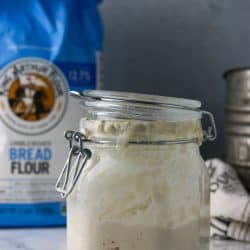
Feeding Sourdough Starter
Ingredients
- 60 grams unbleached all-purpose flour (or I use 1/2 whole wheat flour and 1/2 AP flour)
- 60 grams water filtered or bottled water is best
Instructions
Maintaining Your Sourdough Starter At Room Temperature
- Start by stirring your starter and discard all but 4 ounces (about 1/2 cup, 113 g).
- Add flour and water
- Mix until smooth and cover. Do two feedings a day, 12 hours apart.
Maintaining Your Sourdough Starter In The Fridge
- Stir your starter and discard all but about 4 ounces (113 g, 1/2 cup).
- Add fresh flour and water. Stir until smooth.
- Allow your starter to sit at room temperature for a few hours to make sure it's bubbly. This gives the yeast a chance to become active and start feeding. Once it has rested for 2-4 hours and you see signs of life you can pop it back in the fridge.
- Repeat once a week.
Notes
Nutrition
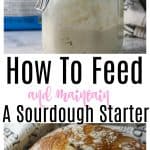
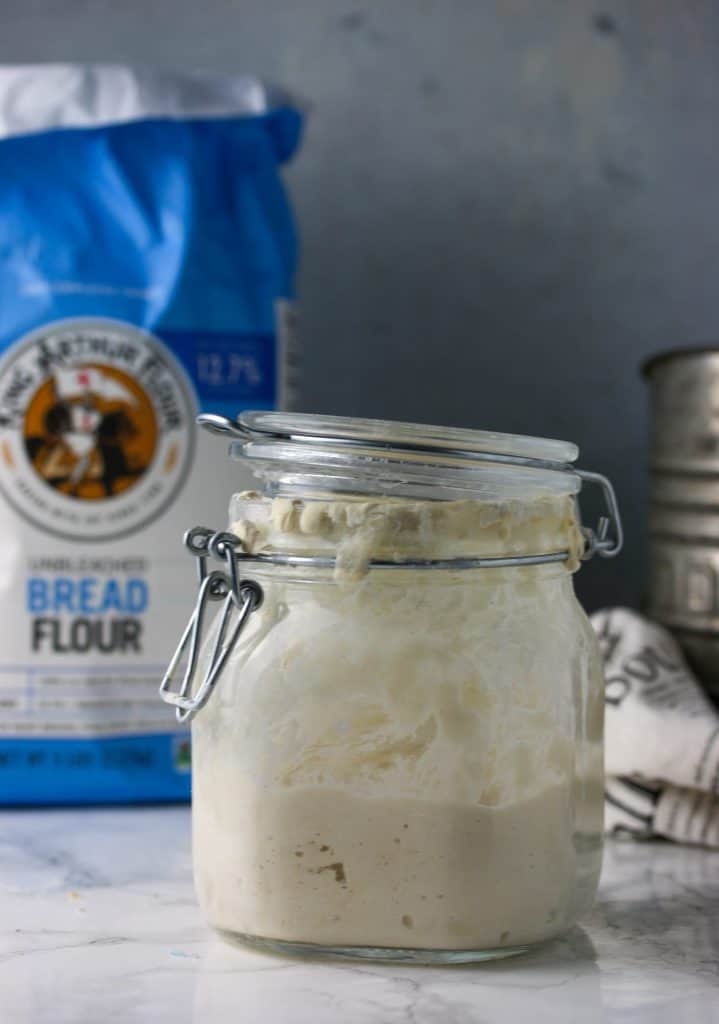
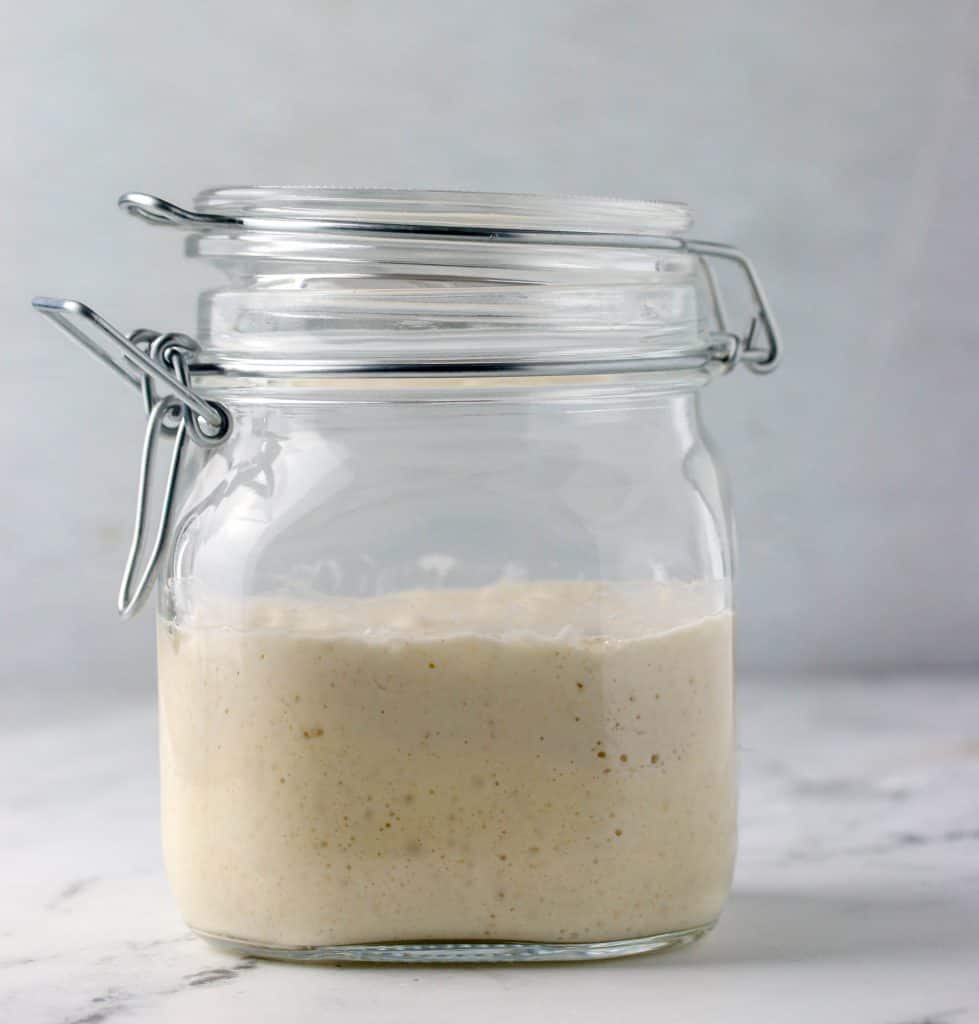
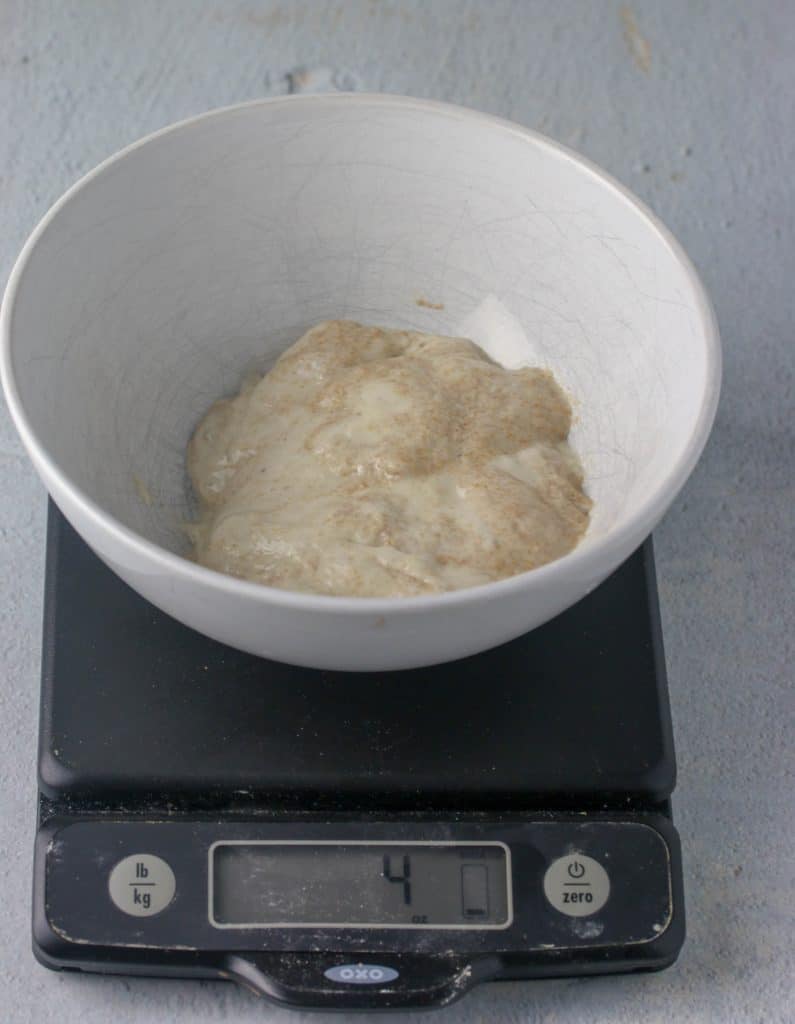
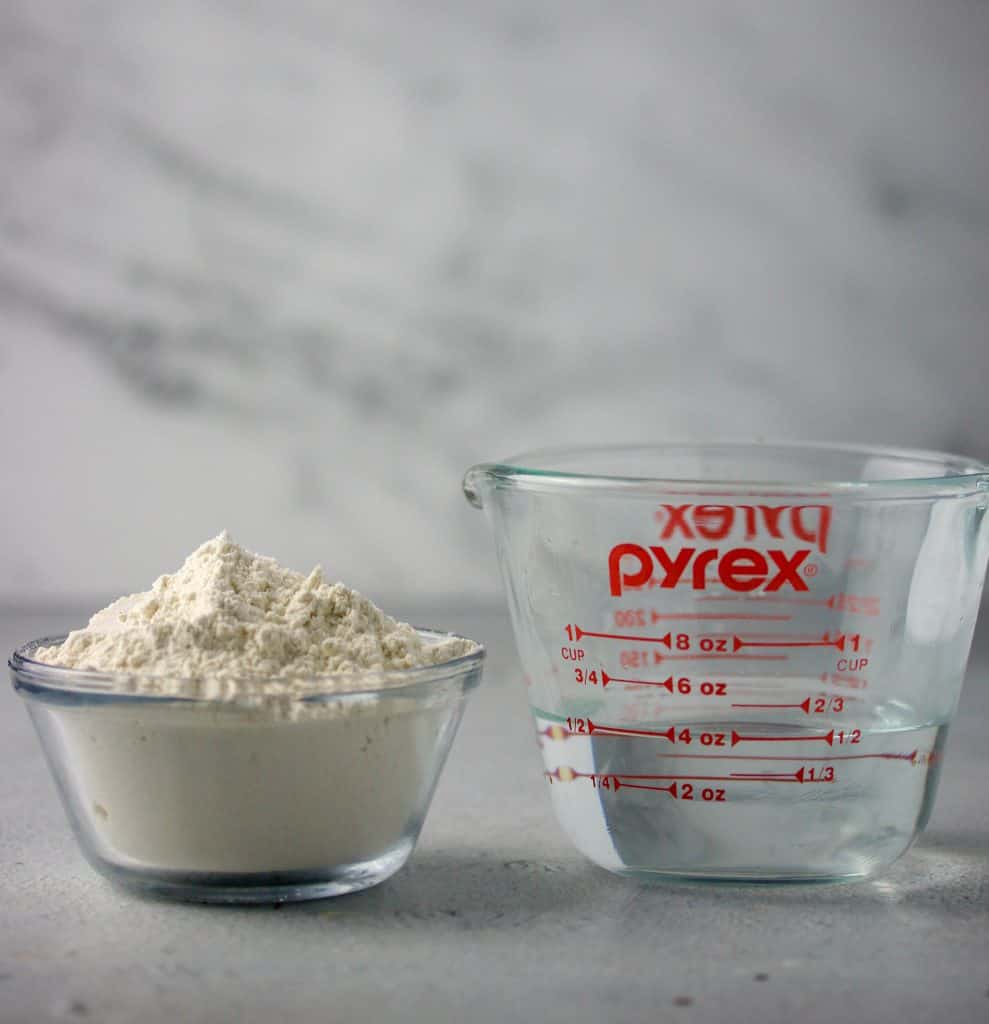
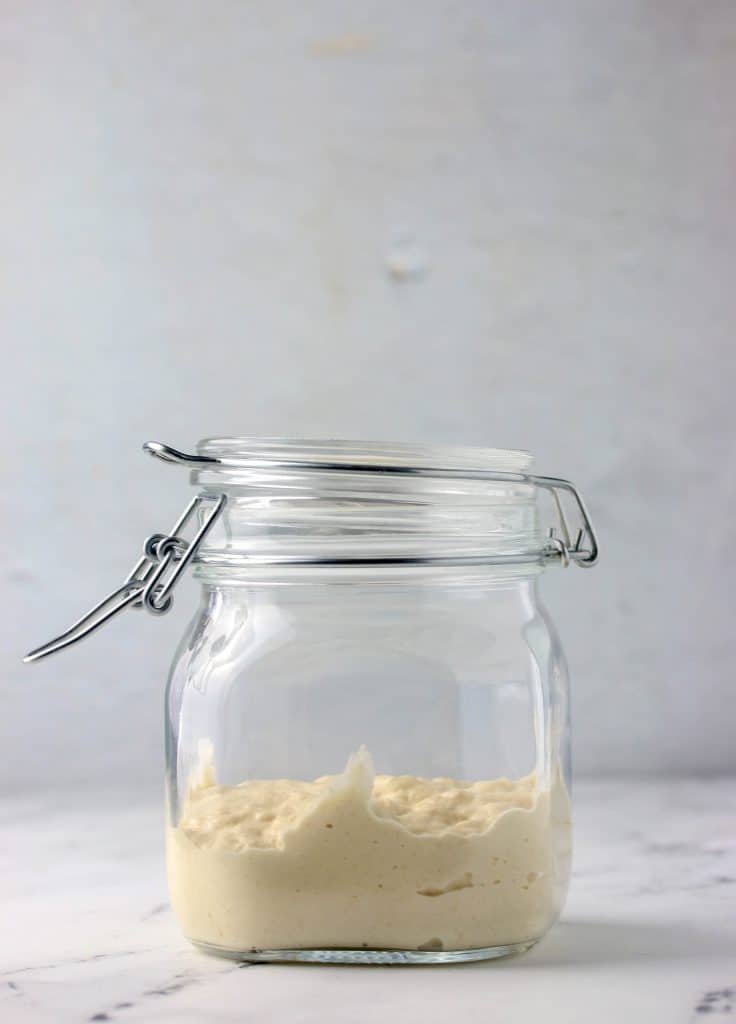
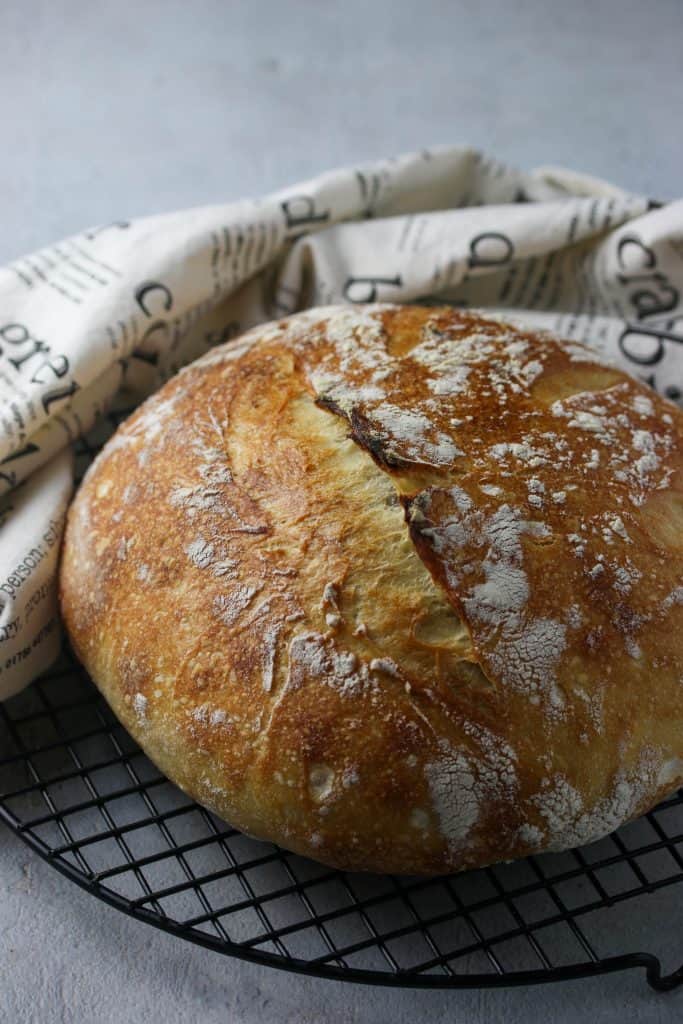

Marian Marino says
I’d like to understand something about the starter. Sometimes I take it out of the fridge and feed it in hopes of baking. There were times when I couldn’t get around to baking so I put the starter back in the fridge. If I decide to bake the next day, do I need to feed again and let it rise or can I use the cold starter directly in a recipe?
Heather says
I would probably give it a feeding and let it come to room temperature so it’s at peak!. Hope that helps
Kathy says
I need 2 1/2 cups of starter for my bread recipe. So I need to build up the amount of my starter. Can I skip the discard step and just feed my starter for a couple of feedings?
Kathy W.
Heather says
You will still want to discard some of it to keep it fresh and active – it’s like giving the yeast more food! But you could try discarding less so you can build up your starter faster.